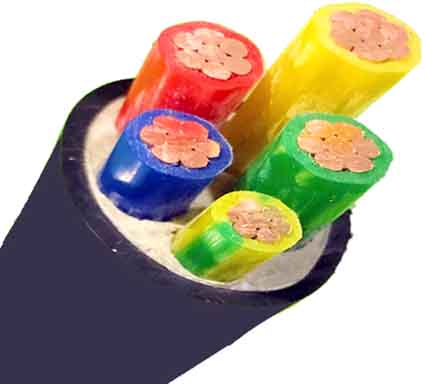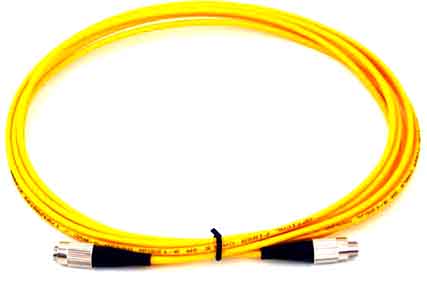The difference between wires, cables, and optical fibers

There is no strict boundary between "wire" and "cable". Generally, products with fewer cores, small product diameters, and simple structures are called wires, those without insulation are called bare wires, and the others are called cables; The conductor with a larger cross-sectional area (greater than 6 square millimeters) is called a large wire, the smaller one (less than or equal to 6 square millimeters) is called a small wire, and the insulated wire is also called a cloth wire.
Difference with optical cable
Cable: When the phone converts the acoustic signal into an electric signal and then transmits it to the exchange via the line, the exchange transmits the electric signal directly to the other phone via the line for answering. The transmission line during this conversation is the cable. The main part of the cable is copper core wire. The core wire diameter is divided into 0.32mm, 0.4mm and 0.5mm. The larger the diameter, the stronger the communication capability;
There are also divided by the number of core wires: 5 pairs, 10 pairs, 20 pairs, 50 pairs, 100 pairs, 200 pairs and so on. The logarithm mentioned here refers to the maximum number of users that the cable can accommodate;
There are also classified by package, I don't know much about this.
Cable: It is large in size, weight, and poor in communication ability, so it can only be used for short-range communication.
Optical cable: When the phone converts the acoustic signal into an electrical signal and then transmits it to the switch via the line, the switch transmits the electrical signal to the photoelectric conversion equipment (converts the electrical signal into an optical signal). It is transmitted to another photoelectric conversion device via the line (converts the optical signal into an electrical signal), then to the switching device, and then to another phone to answer the call. The line between the two photoelectric conversion devices is an optical cable. It is divided into the number of core wires, the number of core wires: 4, 6, 8, 12 pairs and so on.
Optical cable: It has the advantages of small size, weight, low cost, large communication capacity, and strong communication capability. Due to many factors, it is only used for long-distance and point-to-point (ie, two switch rooms) communication transmission. Their difference: The inside of the cable is copper core wire; the inside of the optical cable is glass fiber. An optical cable is a communication line in which a certain number of optical fibers form a cable core in a certain way, and are covered with a sheath, and some are also covered with an outer sheath to realize the transmission of optical signals.
A cable is usually a rope-like cable formed by twisting several or groups of wires (at least two in each group). Each set of wires is insulated from each other and is often twisted around a center, and the entire outer bread has a highly insulated covering; especially the submarine cable.
1: There is a difference in material. The cable is made of metal material (mostly copper, aluminum) as the conductor; The optical cable uses glass fiber as the conductor.
2: There is a difference in the transmission signal. The cable transmits electrical signals. Optical cables transmit optical signals.
3: There is a difference in the scope of application. Cables are now mostly used for energy transmission and low-end data information transmission (such as telephone). Optical cables are mostly used for data transmission.

The difference between cable and optical fiber
Cables are generally considered to be wires that are made of one or more mutually insulated conductors with insulation and protective layers, which transmit electricity or information from one place to another. In a broad sense, it refers to a device that uses metal as a medium to transmit electrical signals.
By definition, cables are used to conduct electricity. Generally made of the following metals: Copper's electrical conductivity is second only to silver, and its thermal conductivity is second only to gold and silver; Corrosion resistance, non-magnetic, good plasticity, easy to weld, and versatile. Copper alloys mainly improve the wear resistance, corrosion resistance and mechanical and physical properties of copper.
Silver, the metal has the highest conductivity and thermal conductivity, has good corrosion resistance and oxidation resistance, and is easy to weld; Mainly used for plating and cladding; Gold and nickel are used as high temperature resistant wires.
Iron (steel) is often used as a reinforcing material for composite conductors, such as steel core aluminum wire, copper clad steel, and aluminum clad steel wire.
Zinc is used as coating for steel wire/steel strip/iron conductor to prevent corrosion.
Tin is used as the plating layer of steel wire/copper wire to prevent corrosion and facilitate the welding of copper wire.





